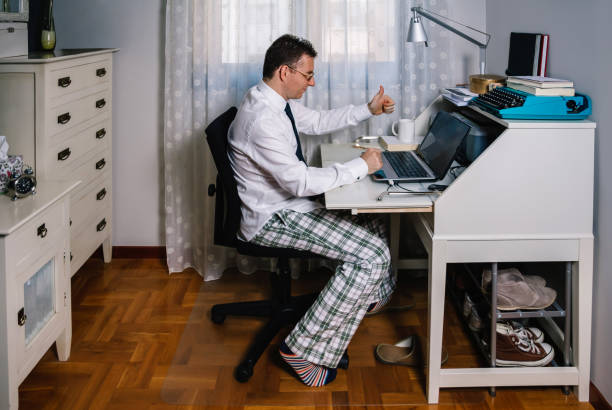Due to the Covid-19 pandemic, I came to an intriguing realization: I’ve now worked in an in-office position for half of my Ph.D. and worked remotely for the other half!
Remote employment is becoming increasingly frequent and mainstream. I’ve seen a lot of misconceptions and misinformation about what “remote work” is, and how it works from Twitter commentators.
Today I’ll tell you about my experience – it’ll be an open and honest overview of the the ups and downs of remote working. If you’ve been trying to figure out what’s going on, maybe this background will assist.
First stage: I was desperate
During the first weeks, I remember I was quite lost. I used to just wake up at the same time as when I used to commute and I was not even changing my pajamas to work from home. I was finding it difficult to concentrate, as I was missing going to the office and having social interactions with my coworkers.

I was feeling enclosed in my apartment, and it was difficult to disconnect from the working routine, as every idea that came up to my mind made me jump into the laptop and keep working on it. This was a consequence of having leisure activities and my job at the same place.
Second stage: Maybe this is not that bad?
Then I realized it was a problem of not setting a routine. As I was saving the commuting time, I decided to give myself the reward of waking up a bit later, as this is one of the best features of remote working, flexibility. Then, once I was up, I would get rid of my pajamas as if I was commuting to my workplace.
I learned remote working does not mean you have to wake up and go directly to your computer. These are the changes I made to improve my experience:
- Creating dedicated workspace at home
- I designated one place in my apartment in which I was going to carry my working activities.
- Setting and scheduling my working ours
- This was really useful. I managed to set the hours in which I would be fully focused, with no distractions having as mini-breaks timers with the Pomodoro technique.
- Establishing clear boundaries
- I asked all my friends and family not to disturb me during my working hours. This is essential to be productive and obtain the feeling of achievement when fulfilling your goals.
- Waking up at the same time everyday
- It allowed me to set up the routine.
- Not going online as the first thing
- I gave me my time to have a shower and good breakfast and then start my working routine.
- Doing some chores before work
- This gave me the feeling I am working in a good, comfortable and organized environment.
- Setting my goals at the beginning of the day
- Doing the small working tasks first
- It gave me a boost of feeling of achievement that helped me out to carry the motivation for the rest of the day.
- Prioritizing the tasks that causes major anxiety
- This allowed me to prevent be constantly looking at the clock, as I knew I was going to finish them properly during my working hours.
- Exercising at home
- I wanted to prevent feeling unhealthy due to the lack of physical activities

And the most important part: socializing with my co-workers, regardless of being online. Carrying out research discussions, coffee breaks, and even sharing memes at some points of the day was nice to preserve the feeling of socializing with my colleagues.
Conclusion
All these changes made my remote experience a wonderful situation in which I learned to appreciate the flexibility of working from home. Now, I believe having a mixed scheme half in-site half off-site might be the key difference for having a good job experience. Having the freedom of choice when it comes to remote or on-site working makes the end employee much happier due to the benefits of flexibility.